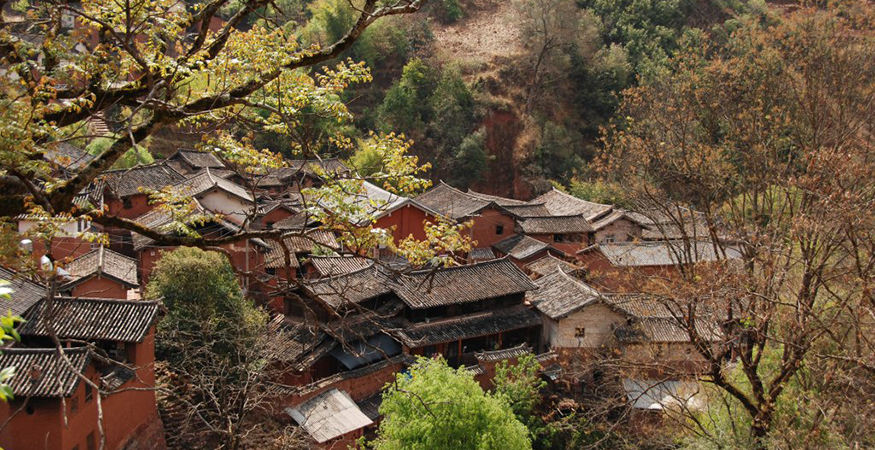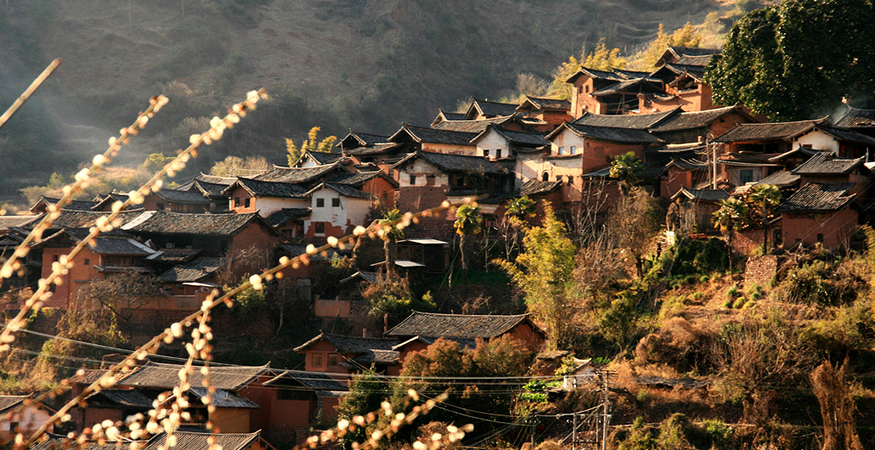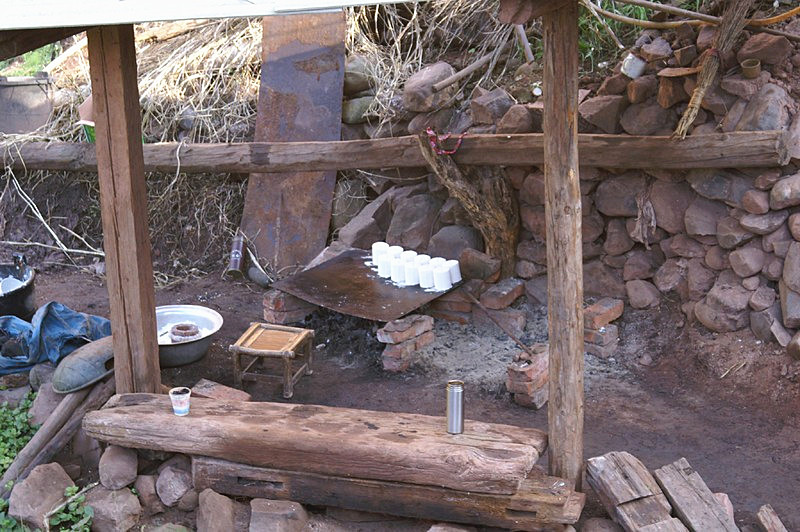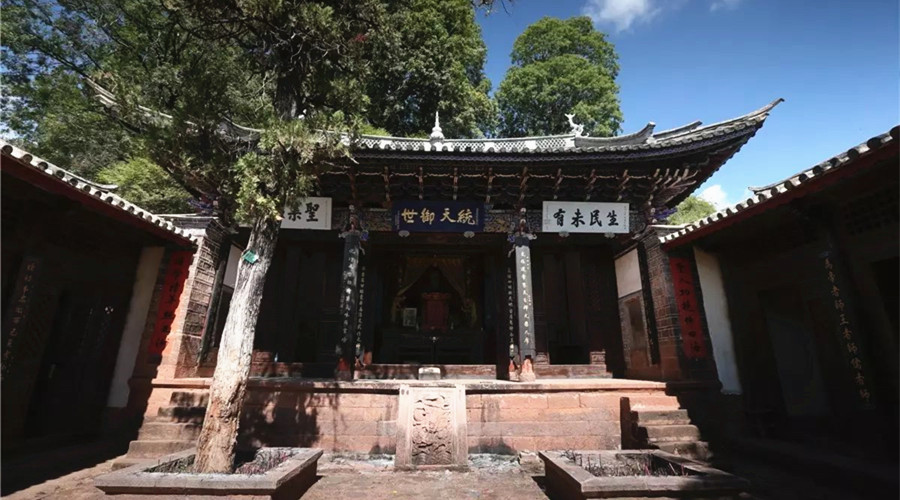
Nuodeng Ancient Village of Nuodeng Town in Yunlong County, Dali
Chinese Name: 大理白族自治州云龙县诺邓镇诺邓古村
English Name: Nuodeng Ancient Village of Nuodeng Town in Yunlong County, Dali
Nuodeng Village Overview
Nuodeng Village is located at the southern end of the Three Parallel Rivers of Yunnan Protected Areas World Heritage Site, in Yunlong County, Yunnan Province, China. It is 165 kilometers from the seat of Dali Prefecture and is easily accessible. It was one of the earliest economic centers of the Bai ethnic group, the oldest village in northwest Yunnan, and is recorded in the earliest historical texts of Yunnan, such as “Manshu,” where its original name has remained unchanged. The village preserves numerous buildings from the Ming and Qing dynasties, as well as the famous Yuhuangge Taoist architectural complex.
Basic Overview
Historical research indicates that Nuodeng is the oldest village in northwest Yunnan and retains its original name as recorded in “Manshu,” the earliest historical text in Yunnan. The village has few modern residential buildings but maintains many Ming and Qing dynasty structures, including the renowned Yuhuangge Taoist architectural complex.
The name “Nuodeng” in the Bai language means “hill with tigers.” This small village, which has endured through the Tang, Song, Yuan, Ming, and Qing dynasties over a period of 1138 years, was historically significant. “Manshu,” written during the Tang Dynasty, provides clear records of Nuodeng, indicating that it had already developed salt wells by the Tang Dynasty and relied on salt production for its livelihood.
Nuodeng, also known as “Nuodeng Well,” where “Well” refers to salt wells, played a crucial role in the salt industry. According to historical records, salt mining in Yunnan began during the Qin and Han Dynasties. From the Tang Dynasty onwards, Nuodeng Village’s development was entirely dependent on the rise and fall of the salt industry.
Due to the exceptional quality of Nuodeng salt, it has long been favored in the Baoshan and Tengchong regions. The ancient “Tea Horse Road” in Nuodeng connected to Dali, Kunming, Baoshan, Tengchong, Liuku, and Lijiang, attracting merchants from all directions and thriving economically. Nuodeng Village was once one of the commercial centers of northwest Yunnan.
The well-preserved ancient salt wells and the site of the Ming Dynasty Five Wells Salt Inspection Office are valuable resources for studying the ancient salt industry and culture of Yunnan.
Geographical Advantages
In addition to salt, Nuodeng has also “produced” scholars and talents. Despite its remote location and inconvenient transportation, the village was renowned for its cultural achievements and the number of scholars during the Ming and Qing Dynasties.
Nuodeng Village boasts the highest number of “jingshi” (successful imperial examination candidates) in Yunlong, with numerous “juren” (provincial degree holders), “gongsheng” (graduate students), and “xiucai” (talented individuals). During the Kangxi and Qianlong periods of the Qing Dynasty, local scholar Huang Gui became a prominent cultural figure, known as “The Confucian Luminary of Central Yunnan.”
Surrounded by mountains, Nuodeng Village has an elevation ranging from 1900 meters at the lowest point to over 2100 meters at the Yuhuangge. The terrain varies greatly, with most residential buildings situated on hillsides, except for a small flat area behind the “Dragon King Temple” on the eastern foothills. The architectural style of the village’s residences is similar to Bai-style houses in Dali, featuring layouts such as “Three Houses and One Screen Wall” and “Four Courtyards and Five Skylights.” Due to the mountainous terrain, the architecture varies creatively, harmonizing with the natural surroundings.
Nuodeng’s residential buildings emphasize exquisite craftsmanship, with detailed carvings on doors, windows, wooden beams, columns, and eaves. The gable walls and courtyard walls also feature paintings or patterns. Each family’s main house, side rooms, and screen walls have unique designs, making each house distinct. The screen walls, which are significant in Bai architecture, are tall and adapt to the natural features of the land.
The village’s “main gates” are particularly diverse in style and orientation, blending grandeur with elegance. The style of the main rooms reflects a solemn and ancient simplicity, with many households preserving furniture, antiques, and artifacts from the Ming and Qing Dynasties. The existing residential buildings are mainly from the Ming and Qing periods, with a few from the Republican era.
At the mountain top Yuhuangge, one can truly feel the ancient aura of the millennia-old temple. The atmosphere around the area even gives the impression of ancient spirits lingering in the air. Nuodeng is a tranquil village, seemingly distant from the modern world, yet it is a vivid and living ancient village. The villagers are simple and friendly, reminiscent of the early days of the world. When visiting, you are often invited to join them for meals, tea, and even to stay with them.
Local people prepare their staple food with coarse rice mixed with steamed white corn flour, and the meat bone soup is so aromatic it feels like it could make your tongue melt. In leisure time, villagers invite you for tea, and as night falls, they offer to warm you by the fire and even provide a place to rest.
According to villagers, there has never been a major crime in Nuodeng Village throughout history. In Nuodeng, one can truly experience the simplicity and respect for traditions of its people.

Recommended Attractions
Yuhuang Pavilion Daoist Complex: The complex includes the Yuhuang Pavilion main hall, Maitreya Hall, Guan Yu Temple, Confucian Temple, and Lingxing Gate, all of which are Qing Dynasty temple buildings.
Huang Clan Memorial Archway: This stone archway in the village originally served as the site of the Ming Dynasty Wu Jing Supervisory Office. Later, it became a memorial archway for the Huang family, inscribed with the names of successful scholars and officials from the Huang family from the mid-Ming to the Qianlong period of the Qing Dynasty.
Wanshou Palace: Originally a guesthouse for merchants from outside provinces during the Yuan Dynasty, it was later converted into a temple known as “Zhushou Temple.” In the early Qing Dynasty, it was renamed “Wanshou Palace.” Some wooden framework of the ancient building still remains, and the front hall is mostly intact.
Nuodeng Village Residential Architecture: Includes the Beishan Huang Family residence and other main residential buildings in Beishan. Built to suit the mountainous terrain, the village features old streets, shops, and a labyrinth of alleys with unique styles.
Hedong Residential Architecture Complex: Features ingenious courtyard designs with four-sided and five-courtyard styles, each with distinctive characteristics.
Hetou Residential Architecture: Includes ancient and unique courtyards like the “Silver Smith’s House,” built over 300 years ago.
Salt Wells: The earliest wells were dug during the Han Dynasty, dating back over two thousand years. The name “Nuodeng Wells” has been in use for over 1,300 years. Today, besides the salt wells, there are still buildings like the well house and large salt boiling stoves.
Ancient Post Roads and Bridges: Ancient post roads and bridges connected Nuodeng to Lijiang in the north, Dali in the east, Baoshan in the south, and Piematengchong in the west. Many are paved with stone slabs, and remnants can still be seen today.
Self-Driving: It is 518 kilometers from Kunming and 158 kilometers from the provincial capital Dali. The journey from Kunming to Dali is entirely on the highway. After exiting the highway, it takes about 3 more hours on a tertiary asphalt road to reach Yunlong County. Nuodeng is about 170 kilometers from Dali. Nuodeng is 7 kilometers from the county seat, and the rural roads are gravel mixed with stones, which most sedans can navigate.
Historical Significance
Located in a valley in northwest Yunlong County, Dali Bai Autonomous Prefecture, Yunnan Province, Nuodeng Village has retained its name since the Tang Dynasty’s Nanzhao period, earning it the moniker “Thousand-Year Bai Village.” It is the oldest settlement in northwest Yunnan and is recorded in Yunnan’s oldest historical text, the “Manshu,” preserving its original name.
Architectural Heritage
Nuodeng Village features minimal modern residential buildings, showcasing numerous well-preserved Ming and Qing Dynasty structures. Among these is the famous Yuhuang Pavilion Daoist Complex. The oldest building, the “Wanshou Palace,” dates back to the Yuan Dynasty and has evolved from a guesthouse for merchants to a temple, reflecting the village’s economic prosperity through the Song and Yuan Dynasties.
Cultural Legacy
Despite its remote location and challenging transportation, Nuodeng flourished culturally during the Ming and Qing Dynasties. It produced a significant number of successful imperial examination candidates, including renowned scholar Huang Gui, whose poetry was included in Yunnan’s earliest anthology, “Dian Nan Shi Lue.”
The village is deeply influenced by Confucianism, evident in the elaborate architecture of its Confucian Temple and grand traditional rites. Over time, immigrants from various regions have merged with the local population, resulting in a unique Bai community that continues to uphold traditional customs and religious practices.
Religious and Cultural Diversity
Nuodeng’s religious landscape is characterized by a blend of Daoism, Buddhism, and Confucianism. The village features well-preserved temples from the Kangxi and Qianlong periods, including the Yuhuang Pavilion and various other Daoist and Buddhist temples. Traditional rites, ancestor worship, and deity festivals reflect a rich cultural tapestry of Daoist and Confucian influences.
Preservation and Recognition
Nuodeng Village’s remarkable preservation of ancient architecture and cultural heritage is rare both in Yunnan and nationally. The village offers a profound record of the region’s historical, cultural, economic, and social evolution over centuries. It has been awarded several honors for its historical and cultural significance, including:
- January 2002: Designated as a “Provincial Historic and Cultural Village.”
- August 2005: Recognized as a “Tourism Town for Development and Construction in Yunnan Province.”
- September 2005: Rated as “China’s Most Tourism-Worthy Ancient Village.”
- May 31, 2007: Named a “Chinese Historical and Cultural Village.”
- November 2007: Rated as a “Chinese Scenic Village.”
Domestic experts and scholars have summarized Nuodeng Village’s historical and cultural value as follows:
- Nuodeng is the oldest historical village in Yunnan.
- Nuodeng is Yunnan’s earliest economic special zone.
- Nuodeng is the central hub of the ancient salt and horse roads in northwest Yunnan.
- Nuodeng serves as a living textbook for studying ancient Chinese salt well culture.
- Nuodeng has the best-preserved and most concentrated collection of Ming and Qing architecture.
- Nuodeng offers excellent tourism resources with both cultural and ecological landscapes.
Nuodeng Village was awarded the title of “Provincial Historic and Cultural Village” in January 2002. In August 2005, it was designated as a “Tourism Town for Development and Construction in Yunnan Province,” and in September of the same year, it was rated as “China’s Most Tourism-Worthy Ancient Village.” On May 31, 2007, Nuodeng Village was named a “Chinese Historical and Cultural Village,” and in November of the same year, it was also rated as a “Chinese Scenic Village.”
Scenic Overview of Nuodeng Village
- Ancient Salt Wells In 109 BC, Emperor Wu of Han conquered Yunnan and established Yizhou Prefecture, which included 24 counties, with Bisu County being in the Pi River Basin centered around Nuodeng. “Bisu” in Bai Mian language means “a place with salt.” The Nuodeng salt wells have been in operation for over two thousand years since the Han Dynasty. These wells are 21 meters deep and used to extract brine manually, which was then distributed to households for salt production.
- Brine Vein Dragon King The Dragon King of Nuodeng is believed to oversee the brine veins of the Five Wells. In the early Ming Dynasty, the Five Wells included Nuodeng Well, Shundang Well, Mountain Well, Master Well, Big Well, and others from Lijiang and Heqing. By the late Ming Dynasty, the Five Wells were commonly referred to as Nuodeng Well, Tianer Well, Big Well, Shimen Well, and Luoma Well.
- North Mountain Residences The residences on North Mountain in Nuodeng are built on the slopes, stacked layer by layer. The courtyards are connected with stairs and terraces, often with the front house’s back door leading to the rear courtyard of the next house. Ancient poets described Nuodeng Village as “terraces dividing paths, layered buildings gathering in the village.” The village features various courtyard styles such as “Three Bays and One Screen Wall,” “Four Courtyards and Five Patios,” and “Five Dripping Water Courtyards.”
- Hedong Residences Ancient poetry describes Nuodeng River as “a narrow town with a shallow river.” In the Hedong area, where the terrain is slightly gentler, the residential courtyards are relatively spacious and complete. Ancient texts describe Nuodeng Village as “surrounded by high mountains, with Nuodeng River in the foreground, dense plantings, and a hundred households depending on the mountains for their homes, with ups and downs.”
- Salt Street Salt Bureau The Hedong Salt Street has the remains of an old Salt Bureau, where households would deliver their salt to the bureau. The Salt Officer would then distribute the salt for trade. Salt transport caravans departed from here, heading east to Dali, south to Baoshan, west to Tengchong and Myanmar, and north to Lijiang and Tibet along the “Salt (Tea) Horse Road.” In the Ming Dynasty, the Salt Bureau contributed 38,000 taels of silver in salt tax to the central government annually. The Salt Bureau site includes the ruins of Wanshou Palace and various residential courtyards like “Four Courtyards and Five Patios” and “Five Dripping Water Courtyards.” The Wanshou Palace, originally a Yuan Dynasty building, was converted into a temple in the early Ming Dynasty, later renamed Wanshou Palace during the Jiajing period.
- Tax Officer’s Yamen In 1383, the Ming government established seven “Salt Tax Supervisory Offices” nationwide, with Yunnan having four, including the “Five Wells Salt Tax Supervisory Office” in Nuodeng. When the office relocated, it became the private residence area of the Huang family, who converted the original office gate into a “Name Tablet Arch” to display family achievements. During the Qing Dynasty, the Huang family produced two Jinshi, five Juren, and over a hundred Xiucai. Huang Gui, a Juren in the Kangxi and Qianlong periods, was renowned and praised as a “scholar of Yunnan.”
- Daoist Priest’s Moon Platform Daoism had a significant influence in Nuodeng from the Ming and Qing Dynasties. This site is the former residence of a renowned Daoist priest from the late Qing and early Republic periods, featuring a unique moon platform in the courtyard for rituals or Daoist practices.
- Silversmith’s Old Residence Since the late Ming Dynasty, the Yang family’s silver craftsmanship has been well-known. The old residence of the silversmith, built in the late Ming Dynasty, is relatively ancient.
- River Head Pool Reflections The river head in Nuodeng Village has several deep pools shaped like cups, bowls, ladles, and basins. There are also ruins of ancient mills and grinding houses, surrounded by cascading waterfalls, flowing springs, and shaded trees, creating a serene and clear reflection in the pools.
- Ancient Banyan Tree of the Huang Family Among the North Mountain residences, the Huang family planted a more than 300-year-old mountain banyan tree, locally named “Ten Thousand Years Green,” which shades the area in front of the old Tax Officer’s Yamen.
- Tribute Official’s Family Customs The front hall of the Hedong Tribute Official’s residence has burn marks on the beams from the mid-Qing Dynasty, with a legend that a fire destroyed only one beam of the building when no one was home, and the fire extinguished itself. This family preserved the marks as a moral lesson for future generations to value culture, adhere to etiquette, and act with righteousness.
- Jinshi Family Carvings The residence of Jinshi Huang Shaokui from the Qianlong period features exquisite wood carvings, particularly the “Huang List Honor Return Home” and “Qilin Exploring the Flowers, Double Phoenix Morning Sun” carvings. Many villagers in Nuodeng also retain numerous Ming and Qing cultural relics, including antiques, artworks, plaques, and old furniture, totaling over 10,000 pieces.
- Roof Eaves Dripping Nuodeng residences are built according to the terrain, and their courtyards differ from those in flatlands. The main house and auxiliary buildings are not on the same level, creating a layered eave effect known as “Five Dripping Water Courtyards” or variations like “Four Dripping Water” and “Six Dripping Water.” These buildings reflect the harmony between humans and nature, with distinctive architectural elements and a focus on traditional craftsmanship and detailed carving.
- Terraced Courtyards The North Mountain residences in Nuodeng are built on steep slopes, forming “terraced courtyards” with three or four levels of terraces inside, each rising step-by-step, creating a unique architectural style.
- Compact Courtyards Due to dense population and limited land, many residences in Nuodeng are compact and intricately designed.
- Terraced Market In ancient times, Nuodeng held markets four times a month. Due to space constraints, the market was held at the west end of the village on a long stone staircase. It is said that a leopard once fell from the stairs and died, highlighting the steepness of the steps.
- Stone Slate Streets The village streets and alleys of Nuodeng are paved with uniform stone slates, with steps and platforms every three or five steps, making it difficult to count the number of steps in the village.
- Salt Horse Road North of the village, ancient stone roads can be seen connecting Dali in the east, Baoshan in the south, Tengchong and Myanmar in the west, and Lijiang and Tibet in the north. These roads were used by caravans traveling along the ancient “Salt (Tea) Horse Road.” Remnants of ancient moral archways can be seen on the mountain slopes along the southern roads.
- Local Deity Temples In the northwest of Nuodeng Village, there are temples dedicated to local deities such as the Ben Zhu (San Chong) Temple and Cheng Huang Temple.
- Lingxing Gate Archway In front of the Confucian Temple in Nuodeng is the “Lingxing Gate,” the largest and oldest wooden archway in western Yunnan, built in the early Qing Dynasty. It features four columns, three bays, and decorative eaves and brackets, also known as the “Tengjiao” or “Qifeng” archway.
- Confucian Temple Autumn Sunshine Although Nuodeng is not a prefectural or county seat, it has a Confucian Temple, an exception in ancient rites. The Confucian Temple is exquisite, solemn, and simple, with the main hall featuring a statue of “Commoner Confucius” with a scholarly demeanor, unlike the imperial attire often seen in other temples. The red wall outside the temple’s “Li Men” is inscribed with “Jianghan Autumn Sunshine,” reflecting the village’s refined and high-minded scholarly tradition. Next to the Confucian Temple is a Martial Temple dedicated to the “Martial Sage” Guan Gong, symbolizing the balance of literature and martial arts.
- Yuhuang Pavilion Star Map Yuhuang Pavilion is a rare three-story ancient building in western Yunnan, built during the Ming Jiajing period. It was a famous Daoist temple with a courtyard featuring Ming Dynasty plum trees and other plants. The top floor of the main hall contains the “Twenty-Eight Constellations Map,” known as a unique feature of Nuodeng and valuable for studies of ancient Chinese cosmology, astronomy, art, and architecture.
- Five Cloud Red Leaves The Yuhuang Pavilion complex is praised as “Five Clouds’ First Mountain,” referring to the Five Wells of Yunnan. Surrounding the pavilion are ancient trees, including high and old tree species like the Huanglian tree, reaching up to 30-40 meters tall and over 800 years old. In spring and summer, the trees provide dense green shade, and in autumn, their leaves turn vibrant red and yellow, creating a picturesque scene.
- Zhongyue Temple Courtyard Zhongyue Temple in Nuodeng is a century-old Daoist temple, surrounded by gardens with a variety of plants, including ancient peach trees, lotus ponds, and fragrant flowers. It features a simple and tranquil atmosphere, ideal for leisurely strolls and meditation.
- Cultural Relics Exhibition The old houses in Nuodeng are equipped with traditional furniture and artifacts, including wooden tables, benches, and old books. In recent years, the village has organized exhibitions of cultural relics, showcasing ancient calligraphy, paintings, and ceramics from the Ming and Qing Dynasties, attracting tourists and researchers interested in traditional culture.
- Cultural Heritage Nuodeng Village is rich in cultural heritage, with numerous well-preserved ancient buildings, traditional crafts, and folk customs. It is a valuable site for studying the history, culture, and architecture of Yunnan and southwestern China.
Nuodeng Village offers a glimpse into the rich history, traditional architecture, and cultural heritage of Yunnan. Its ancient salt wells, historic buildings, and unique local customs make it a fascinating destination for visitors interested in China’s historical and cultural landscape.
Nuodeng Village Honors
- November 12, 2021: Nuodeng Village was included in the list of “Qualified Beautiful Leisure Countryside” for the years 2010-2017, as published by the Office of the Ministry of Agriculture and Rural Affairs of China.
- November 2021: The village was also selected for the “2021 Beautiful Village Suggested List” in Yunnan Province, recognized as a provincial-level beautiful village.
















